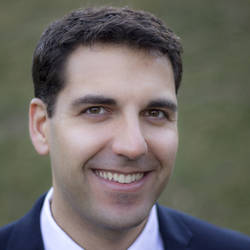By: Eric Siegel, Founder, Predictive Analytics World for Business
 In anticipation of his upcoming conference presentation at Predictive Analytics World for Business Las Vegas, June 16-20, 2019, we asked Nathan Susanj, Vice President and Data Science Manager at Wells Fargo, a few questions about their deployment of predictive analytics. Catch a glimpse of his presentation, Analytics Consulting is Dead, and see what’s in store at the PAW Business conference in Las Vegas.
In anticipation of his upcoming conference presentation at Predictive Analytics World for Business Las Vegas, June 16-20, 2019, we asked Nathan Susanj, Vice President and Data Science Manager at Wells Fargo, a few questions about their deployment of predictive analytics. Catch a glimpse of his presentation, Analytics Consulting is Dead, and see what’s in store at the PAW Business conference in Las Vegas.
Q: In your work with predictive analytics, what behavior or outcome do your models predict?
A: I lead a natural language processing team, so we focus on problems related to understanding and extracting insights from text. In the past, we have built models for extracting the topic of conversation from messages, document classification, and customer feedback, among others.
Q: How does predictive analytics deliver value at your organization – what is one specific way in which it actively drives decisions or operations?
A: I think Wells Fargo has a long history of using data to make decisions. We have many employees who focus in part or in whole on managing and/or analyzing data. It’s hard to point to one specific project, but we’ve seen effective use of predictive analytics everywhere from marketing to risk and individual product lines of business.
Q: Can you describe a quantitative result, such as the predictive lift of your model or the ROI of an analytics initiative?
A: I can’t share specific details, but I will say that I have seen that homerun projects can come from a number of places, and when something sticks, it has the potential of paying back many times the investment.
Q: What surprising discovery or insight have you unearthed in your data?
A: One of the projects I worked on involved a publicly available dataset put together by the Consumer Financial Protection Bureau. We used topic modeling to extract common themes from the data to see what customers are saying about the financial industry in general. There is a great visualization library in Python and R (pyLDAvis/LDAvis) that lets you explore topic modeling results in interesting ways. We used those methods to see some of the most common types of feedback customers were sharing with the CFPB about their experiences. One of the perhaps surprising results is that the data tended to have fairly large spikes. Whatever would prompt a consumer to share with the CFPB tended to spur many other consumers to do the same over a short period of time. We could then use that information to apply predictive modeling to stay ahead of these trends.
Q: Sneak preview: Please tell us a take-away that you will provide during your talk at Predictive Analytics World.
A: The real crux of my argument is that the big changes in analytics methodologies in the past decade necessitate rethinking how analytics projects are executed. Organizations might be tempted to plug in new deep learning or AI-related approaches into their existing analytics workflow, but to me, that’s a mistake. The real value of these next generation tools and techniques needs to be extracted through embedding them directly into products or operations. That’s what my talk explores.
